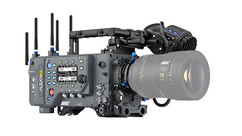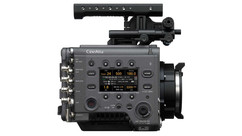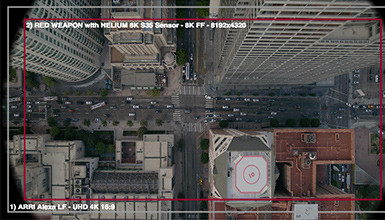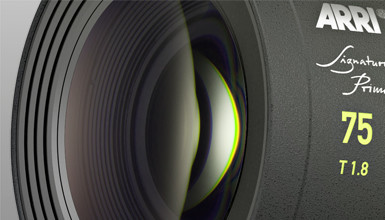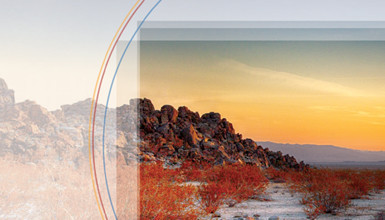Why Full Format?
Aesthetics
Fundamentally, we feel the advantages of full format relate specifically to its look. Imaging to the entirety of a full format camera’s sensor provides a noticeably shallower depth of field for a given field of view and aperture, as compared to Super35. While focus pullers may not be as excited about this aspect, there’s no denying its unique characteristics: greater separation of foreground subjects from the background, generally softer backgrounds, and (perhaps) an enhanced sense of space and air as compared to smaller formats.
Choices
With a such a large sensor area to address, full format also gives filmmakers choices. Many full format camera sensors stick to the traditional 36mm x 24mm (plus or minus a few 10ths or 100ths of a mm) of 35mm still photography, itself derived from a novel re-thinking of the sprocketed reel format used in motion pictures. Other cameras utilize the Digital Cinema Initiative’s “full container” aspect ratio of 1.89:1 (aka 17:9).
A large sensor provides a generous canvas for productions to work off, whether for VFX plates with “look around” for easier compositing, re-framing in post for ultimate control, or simply to have the largest frame size possible for large venue exhibition. Being able to “slice and dice” these new full format sensors allows for more choices than ever before.
Versatility
While some may select one of the new full format camera systems to exploit the maximum sensor area for its unique aesthetic characteristics, others may think that without new (and expensive) expanded-image circle lensing: what’s the point? But, consider that all of the recently announced full format cameras have dedicated Super35 sensor modes for shooting with a wider variety of available glass. Similarly, most full format cameras also provide flexible frame lines as well, making aspect ratios from 1.33:1 to 2.66:1 and beyond easily achievable. And since framing metadata is generally saved with each clip for later “extraction,” the sky’s the limit with respect to unusual aspect ratios or protected areas of the frame, for example for superimposition of 2D and 3D graphics.
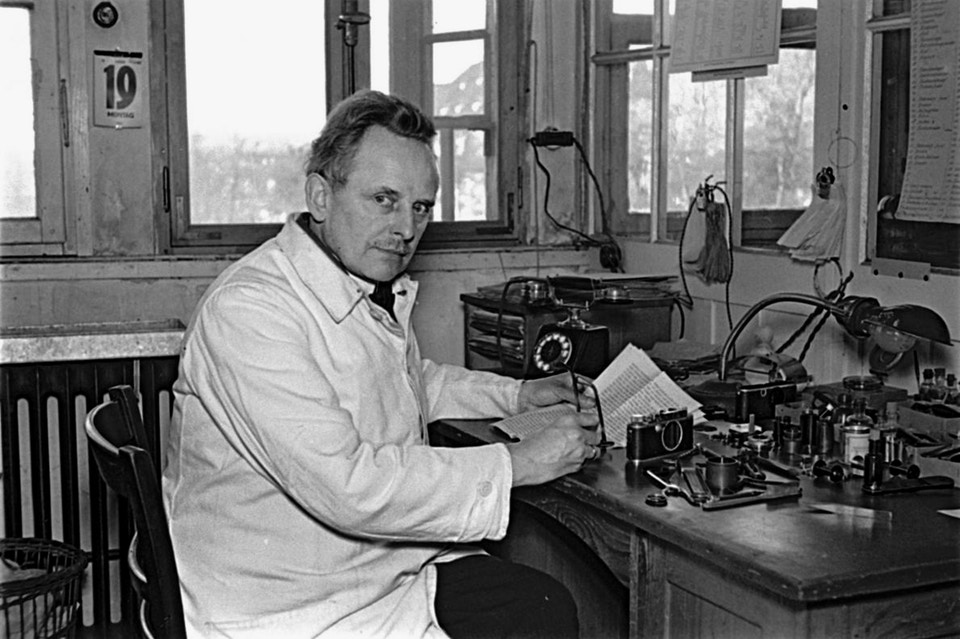
In 1917, an enterprising engineer at E. Leitz’ company in Wetzlar, Germany thought that modest enlargements of still frames made using motion picture film could be of sufficient quality if the frame was enlarged. By re-orienting the film path’s travel to horizontal from vertical and increasing the long edge to a 1.5:1 (also written as 3:2) aspect ratio, Oskar Barnack’s invention, the Leica (a contraction of Leitz Camera) proved to be the first practical “hand camera.” The camera, and its associated film format, went on to define still photography in the 20th century.
Why Now?
Simply put, because we can. Many got their first taste of shooting the VistaVision frame size by grabbing a 5D Mark II and seeing what it could do. Nearly ten years on, we have seen the development of purpose-built, high-end digital cinema cameras that address the shortcomings of a chunky DSLR body shooting line-skipped, pixel-binned HD video at 8-bits with 4:2:0 color sampling to a highly compressed Long GOP codec.
Today's full format digital cinema cameras all can either shoot RAW internally, or send out RAW to an external recorder, at up to 16-bits deep with full 4:4:4 color, once de-Bayered, and feature robust, high bit rate video codecs as well. Most control rolling shutter artifacts extremely well too, making them excellent candidates for handheld sequences and extreme camera moves.
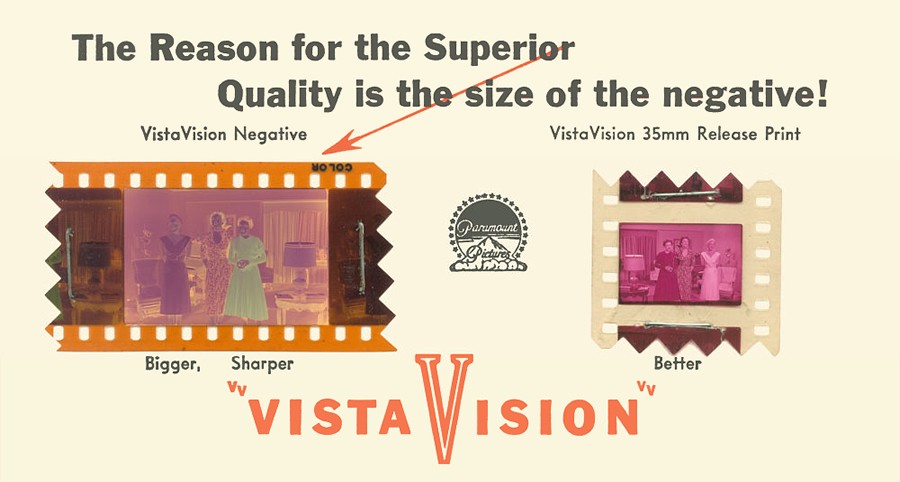
VistaVision was a high-resolution analog film capture format developed and trademarked by Paramount in 1954 with the release of White Christmas. VistaVision utilized the 35mm still photo format, run through the camera horizontally, for a much larger frame size vs. the standard 35mm Academy format of the day. Though Paramount had previously embraced the 1.66:1 aspect ratio, partly in response to the popularity of other widescreen formats like Fox’s CinemaScope, they recommended 1.85:1 as the ideal ratio for printing VistaVision negatives to release stock. After the widescreen format wars of the 1950s, VistaVision cameras continued to be used for optical process shots and visual effects through the early 2000s.
Resolution Needs
As streaming services and subscription cable networks standardize on UHD deliverables, many are requiring the capture device to address a minimum of 4K on the sensor. This puts DPs and production companies in the position of having to choose a camera from a list of “acceptable” models, rather than a camera they feel would be the best fit for their project. However, with multiple manufacturers offering cameras with full format sensors, all with pixel counts well above the 4K threshold, this landscape is changing for the better. As arbitrary as this “standard” might seem to some, there’s no denying that the future is 4K. These camera systems provide robust, ultra-high-quality masters that will allow content providers to “future-proof” their libraries.
Camera Availability
By the end of April 2018, no fewer than three high-end digital cinema cameras will offer full format sensors: RED’s WEAPON with 8K MONTSTRO VV, Sony’s VENICE, and the ALEXA LF from ARRI. For a format this young, in some ways, it’s refreshing to see the industry hit the ground running with broad support and roadmaps looking far into the future.
UPDATE (4/2/2018): Canon has formally announced their entry into the high-end, full format cinema camera space — the C700 FF. Sporting a 5.9K DCI (17:9) full format sensor, the C700 FF is capable of downsampling its sensor’s full resolution to 4K DCI, UHD 3840x2160, 2K DCI, and HD 1920x1080. Overall the sensor is 38.1mm x 20.1mm yielding a lens-friendly 43.1mm diagonal and a framesize of 5952px x 3140px at full readout. The camera is more or less identical to the existing C700 externally and features Canon’s XF-AVC codec and can record RAW to Codex' CDX-36150 recorder which integrates with the camera directly. For more on this latest entry into the full format market, be sure to check out Jeff Lee’s First Look video.
Lens Availability
New cameras are always exciting but they’re only half the story. New lenses are required to take advantage these cameras’ unique capabilities. Larger image circles are necessary to cover the increased sensor areas of these cameras, and with that usually comes increased sized and weight — or slower maximum apertures. While each manufacturer is tackling this challenge in their own way, we see a near future with abundant options from newcomers as well as seasoned veterans of the industry. And those with legacy stills glass will have new options for hosting their vintage collections. Whether your tastes run to the classic look of tried-and-true cinema lenses, the near-clinical sharpness of modern designs, or somewhere in between, there’s a set of full format lenses for your next project. Visit our booth at NAB to see lenses from Angenieux (the EZ series), ARRI (Signature Primes), Canon (CN-E primes), Cooke (the new S7/i line), IB/E (Raptor macro lenses), Leica (Thalia primes), Sigma Cinema Primes, and ZEISS' new CP.3 primes.
High-end Cinema & Anamorphic Options
To be clear, our expectation isn’t that full format will become the new default choice for all projects. Like its analog ancestor VistaVision, we see this new format as a prestige option, adding more production value to projects that have resources commensurate with their goals. We see full format as a natural fit for national-market commercials for major global brands, high-end episodic television (as delivered by 1st-tier streaming services and subscription cable channels’ OTT apps), and of course, feature films slated to “go wide” during studios’ lucrative summer and holiday release schedules.
In addition, all the full format cameras announced thus far have the ability to use classic anamorphic lenses with 2x squeeze factors by utilizing a 4-perf Super35 area of their sensor (24.89mm × 18.66mm). Prior to this wider availability of sensors with 4-perf Super35 imaging areas or greater, the ALEXA (with 4:3 sensor) and ALEXA MINI (with 4:3 license) have been the only options available to fully exploit the storied anamorphic lenses associated with classic films of the format.
Why Us?
Why choose AbelCine as your source for full format? We have a long history of embracing technically complex issues, while at the same time demystifying them and distilling solutions ready for our customers to use. From our roots in 16mm and 35mm film, to the first video cameras capable of shooting at 24 fps, to modern digital high-speed and cinema cameras, we’ve always strived to cut through the technical wall that can exist between creators and their tools.
More than just customers, the creators we support are part of a community of professionals learning and working together to create what comes next. In each of our locations, we aim to create a fertile meeting place for manufacturers and working pros. Our recent Open House in our Brooklyn location saw three of the new full format cameras under the same roof, perhaps for the first time. With the advent of full format digital, we’re as excited as ever to help enable new visions and possibilities for the moving image.











